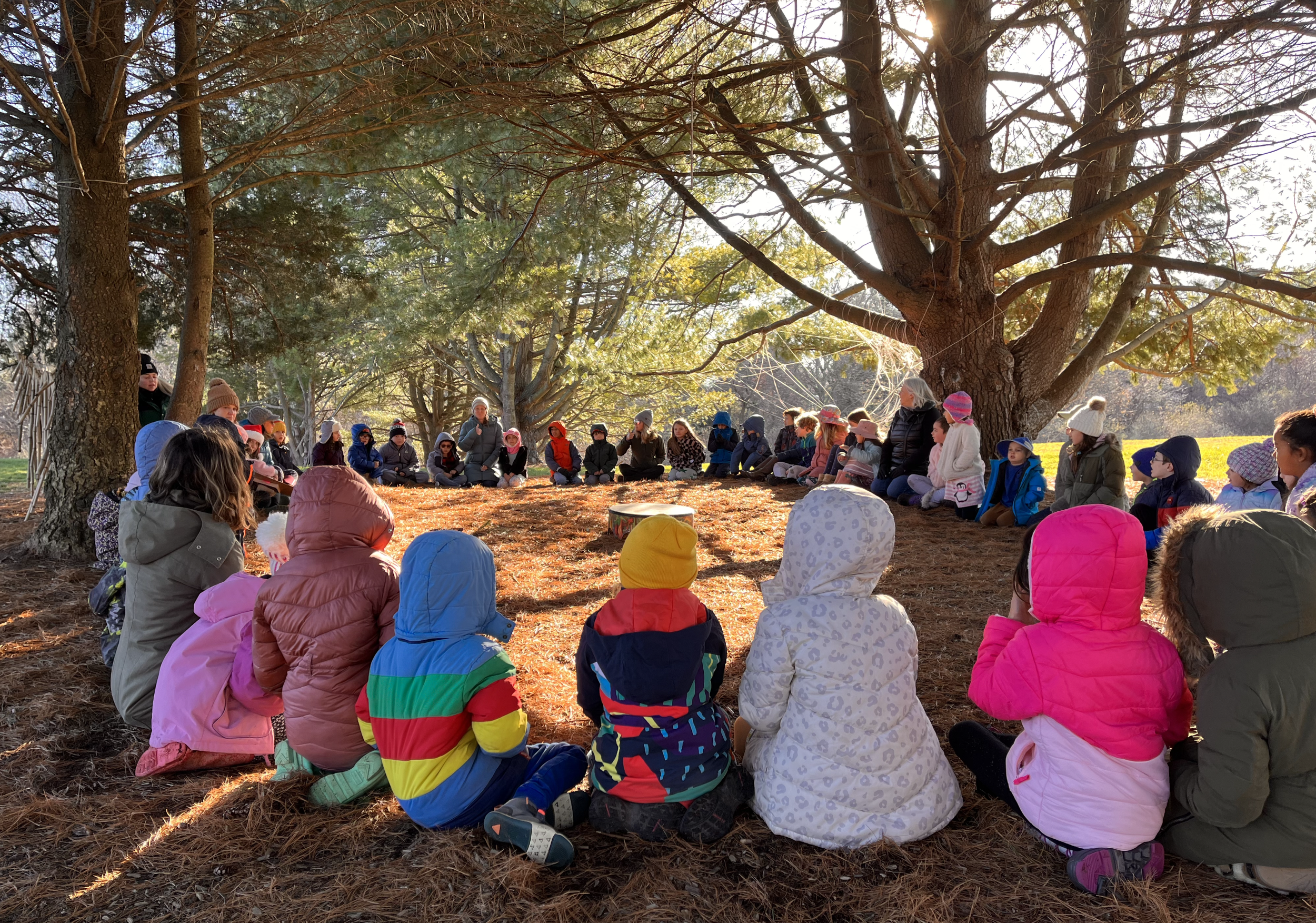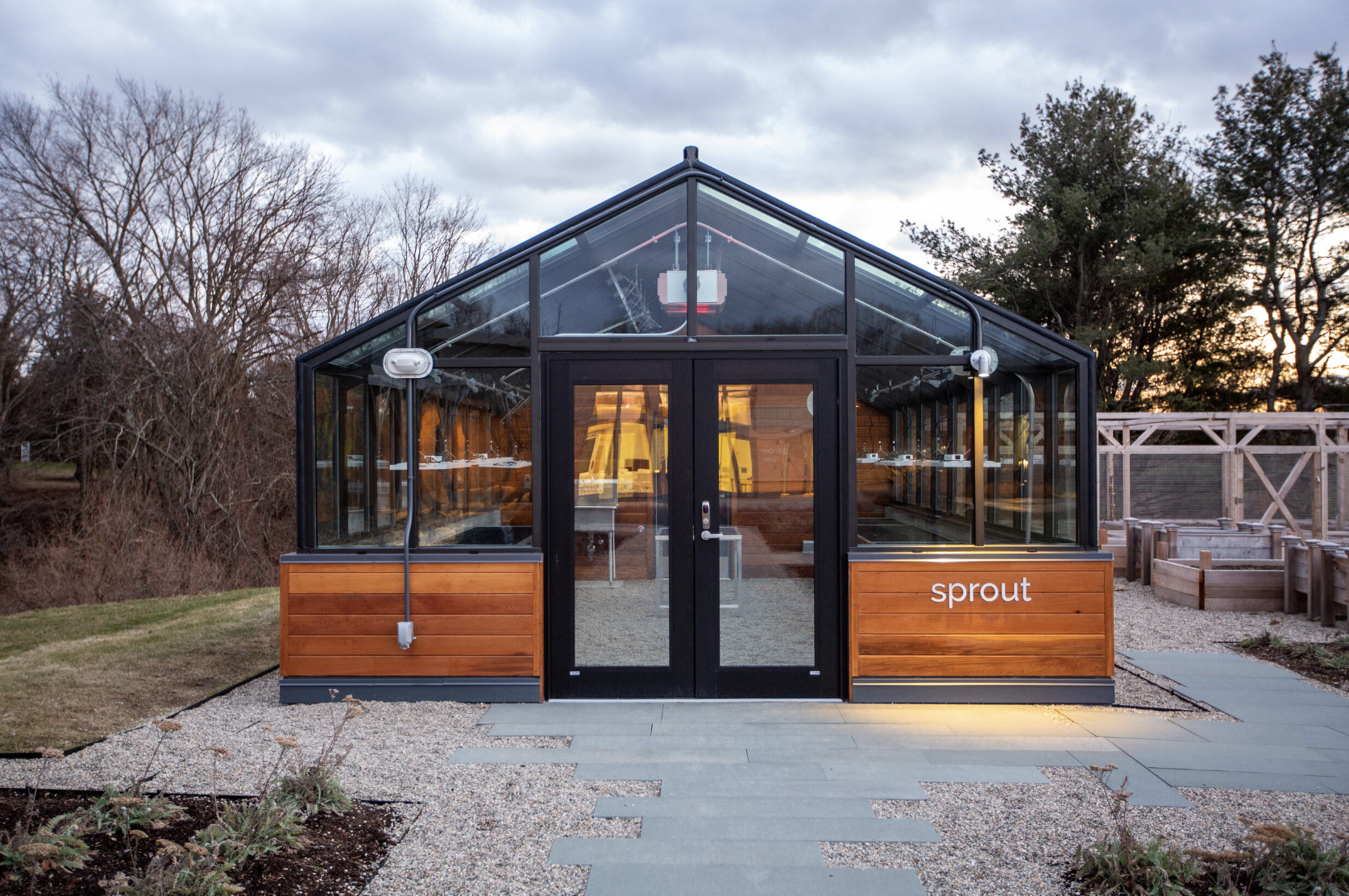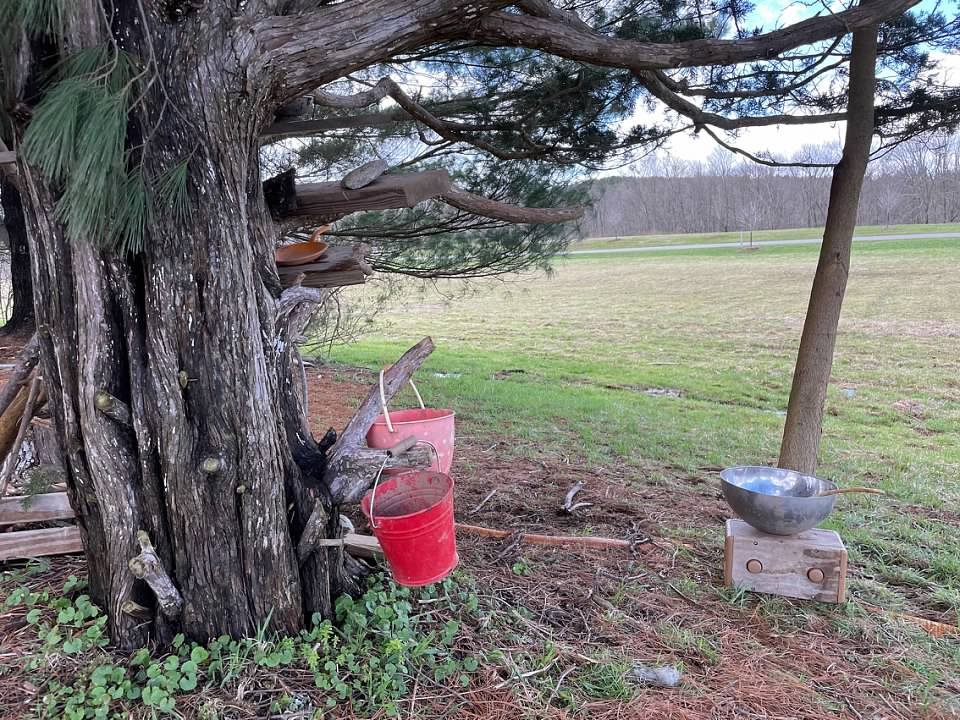
Nature & Natural Learning
Our school is sited on a picturesque 40-acre nature conservancy, which doubles as a learning laboratory for our students.
Nature and natural learning are at the core of Slate School's mission and vision. With a bucolic 40-acre campus, the trees and wildlife are integral to the science, math, writing, and art curriculum. The recreational area alongside the school buildings is designed to be a balance between open space, nature-themed play structures, and the organic gardens and greenhouse. Our mud kitchen provides limitless opportunities for children to experiment and engage in imaginary play.
The Slate School campus extends learning to the existing native habitats, which are accessible by pathways and gathering spaces. Inquiry-based ecosystem studies foster a sense of stewardship for the land and a growing awareness of their place in a community, both human and natural. Students learn about the importance of seasonal changes and basic astronomy, agricultural history, and wildlife identification. They tie together scientific observation, writing, reading, and math in an entirely interdisciplinary approach.

Our Nature Conservancy
Slate School is a leader in environmental stewardship. In addition to the school buildings themselves which are among the most environmentally-friendly in the country, Slate School also created and maintains the school grounds as a nature conservancy. Representing several native Connecticut habitats, the grounds are free of synthetic pesticides, herbicides, and invasive plant species.
Maintaining and Enhancing the Property
During the construction of Slate Lower School, 23 of the 25 acres were purposely left undeveloped. A residential building stood on the property from 1981 until 2012 and, in an effort to leave as much of the additional property undisturbed, Slate School has been constructed in that same location.
Slate School's sense of community extends to the natural world that we inhabit, and is exemplified by the considerations taken to preserve the native ecosystem. Significant areas of the property were previously overtaken by dense masses of invasive plants such as Bamboo, Multiflora Rose, and Autumn Olive, which spread pervasively and have harmful environmental impacts. The removal along the front of the school grounds was the only clearing done on the property and amounted to just 0.13 acres total, and eliminating the invasive species is a significant benefit to the meadows. To replace the destructive mass of invasive plants, Slate School planted native trees, shrubs, and ground cover.
Nature Conservancy
The predominant habitat present at Slate School is meadowland, an essential but diminishing ecosystem for many forms of wildlife, including birds and pollinators. Slate School's meadows are left undisturbed except for select maintained pathways and gathering spaces, where the opportunity to be a sanctuary for wildlife and joyful learning about nature for the students of Slate School go hand in hand. Other features of the landscape include a stream corridor, wetlands, and woodlands.
Slate School's campus is abundant with plants that are valuable sources of food for pollinators, such as joe pye weed, bergamot, and clover. The presence of dogwoods and serviceberry trees, high and low-bush blueberry, and raspberry bushes provide berries for birds and other wildlife at different times of the year. These, along with productive apple trees, are an important resource for students to learn about the edible properties of local plant species.
Slate School is proud to be one of the most environmentally friendly schools in the country. We are part of a healthy building movement that makes human wellness its first priority, while also ensuring that our construction materials have no negative impact on the environment. Our approach to sustainability is based on the idea that healthy buildings, healthy children, and a healthy earth are all interdependent. As a nature-based school, we feel a particular calling to protect the environment around us and treat the earth as gently as we treat our students.

Educational Opportunities on our Nature Conservancy
The schoolyard and the school grounds are an extension of the classroom, where the nature conservancy functions as a means for exceptional hands-on and curiosity-based learning. Not only are students able to learn about the different types of trees and plants present, but also how they relate to each other and the other forms of life that rely on these habitats. Ecosystem studies, biology, ornithology, weather and climate science and more are at our fingertips, where students can engage with their curiosities about the natural world in a tangible and relatable way through scientific observation and experimentation, artwork and writing projects, and creative play.
The nature conservatory provides more than academic opportunities. Slate School's students share in the responsibility to maintain and preserve their school grounds, and become good stewards of the land. It is through this relationship with the landscape that they inhabit daily, and by treating it with the utmost respect and care, that Slate School's students fully become compassionate citizens of the Earth and continue to treat the natural world as a close and personal friend.
Imagination and Exploration
Environmental artists like Andy Goldsworthy inspire the children to notice and create patterns and beautiful images in the natural environment. They enjoy imaginary play in all seasons outdoors, creating their own nests and fairy houses with sticks and natural materials.
The children could not have been more enthusiastic about this, and they were so sweet in offering their ideas and help. In hushed voices (so we could surprise the peg people), we did some brainstorming about how we could bring them with us down to the pond and keep them safe and comfortable.
Down to the pond we went, oh-so-carefully, shielding each of our peg people in cupped hands or pockets. When we arrived, everyone set to work creating a small shelter or perch for their peg person to observe the rainy day pond. Leaves, cattails, stones, and sticks were the perfect building materials. The children felt so proud that they were able to do something for even our smallest friends.
. Imagination in nature abounds. For example, on one rainy Fall day, our Treetop students received a surprise letter from the Peg People:
“Dear Treetop, We have heard you all talk about the pond so much and want to visit, but are a bit worried the rain will wash us away. Can you help us to go see it today, as big people? We would be so grateful! Love, the Peg People.”
The children could not have been more enthusiastic about this, and they were so sweet in offering their ideas and help. In hushed voices (so we could surprise the peg people), we did some brainstorming about how we could bring them with us down to the pond and keep them safe and comfortable.
Down to the pond we went, oh-so-carefully, shielding each of our peg people in cupped hands or pockets. When we arrived, everyone set to work creating a small shelter or perch for their peg person to observe the rainy day pond. Leaves, cattails, stones, and sticks were the perfect building materials. The children felt so proud that they were able to do something for even our smallest friends.

Natural Learning
Math also comes alive through meaningful nature-based activities. The organic garden provides each child with comprehensive learning opportunities, ranging from counting seeds in fruits to weighting vegetables and measuring cooking supplies. Scientific observations are made about the behavior and habitats of indigenous wildlife. Math incorporates visual observations of wildlife, such as adding, subtracting, and visually classifying the turkeys and other animals seen on the meadow each day. Students make comparisons and develop and test generalizations based on observations of patterns and relationships in nature. They take these observations back to the classroom and model these situations using skills like counting, combining, and separation of sets, with objects, pictures, symbols, and open sentences. The children use nonstandard units as well as everyday objects to compare, estimate, and order measures of length, area, capacity, weight, and temperature.

"Oh compost bin, oh compost bin, how lovely is your soil. You break things down and give us Earth, where plants and seeds so soon will birth. Oh compost bin, oh compost bin, how lovely is your soil". At Slate School, our students compost all of their compostables throughout the week. On Fridays, we have this Compost Bin Procession, where they sing this Slate School song and gather all of their compost from the week into the big compost bin.

